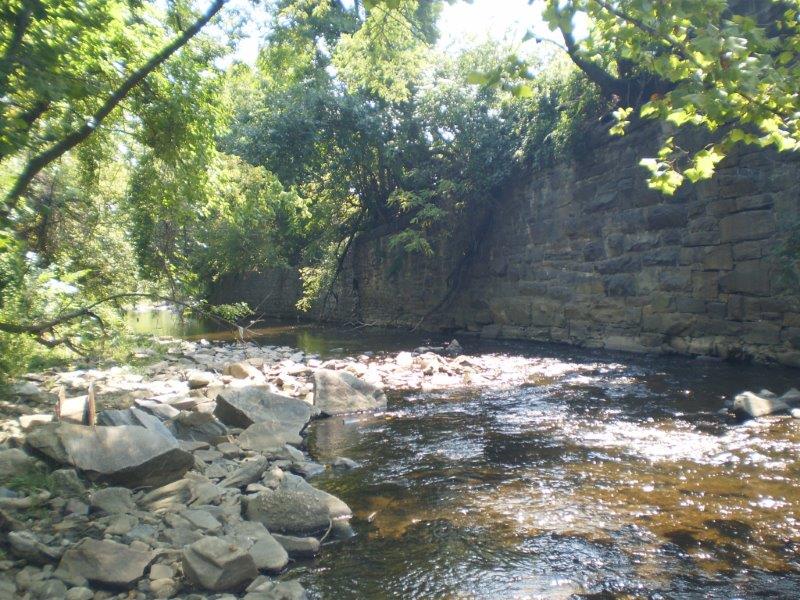After several weeks of weather that begs the question, “Is there any air left in the Arctic?”, I decided to head down to the Falls this morning and see how the Jones Falls was faring. Sure enough, the Jones Falls had layer of ice encroaching from the banks and a thin, clear layer everywhere else. Not that I get down to the Jones Falls all that often in the dead of winter, but this is by far the most ice I haves seen so far on the stream. This image is from the area right across Falls Road from the old abandoned Ma and Pa freight station, and the Light Rail tracks are right on the top of the old retaining wall.
The lower Jones Falls doesn’t freeze that much anymore for a number of reasons. One reason is that many of the former tributary streams to the lower Jones Falls have been buried and turned into miles and miles of underground storm drains. This moderates the temperature in the winter so that it’s not as cold as a stream that is on the surface. You could also add in any relatively warm effluent that finds its way to the Falls as a factor. Fish and invertebrates go dormant this time of year, with the fish seeking the deeper pools for refuge. Usually things will begin stirring in March and April in this part of the world. It was nice seeing the Jones Falls in the snow, definitely a silver lining to this miserably cold weather we have been having.
Come this Sunday we are supposed to get rain and warm temperatures, and most, if not all of this winter scene will be gone. Along with all of that rain will also come a pulse of melted road salt, through the storm drains, the Jones Falls and into the Inner Harbor. This may be a game changer with regards to winter driving safety but has negative impacts on organisms living in what would otherwise be fresh water, like the Jones Falls. The trash in the trees will remain there until someone pulls it from the tree, however!

